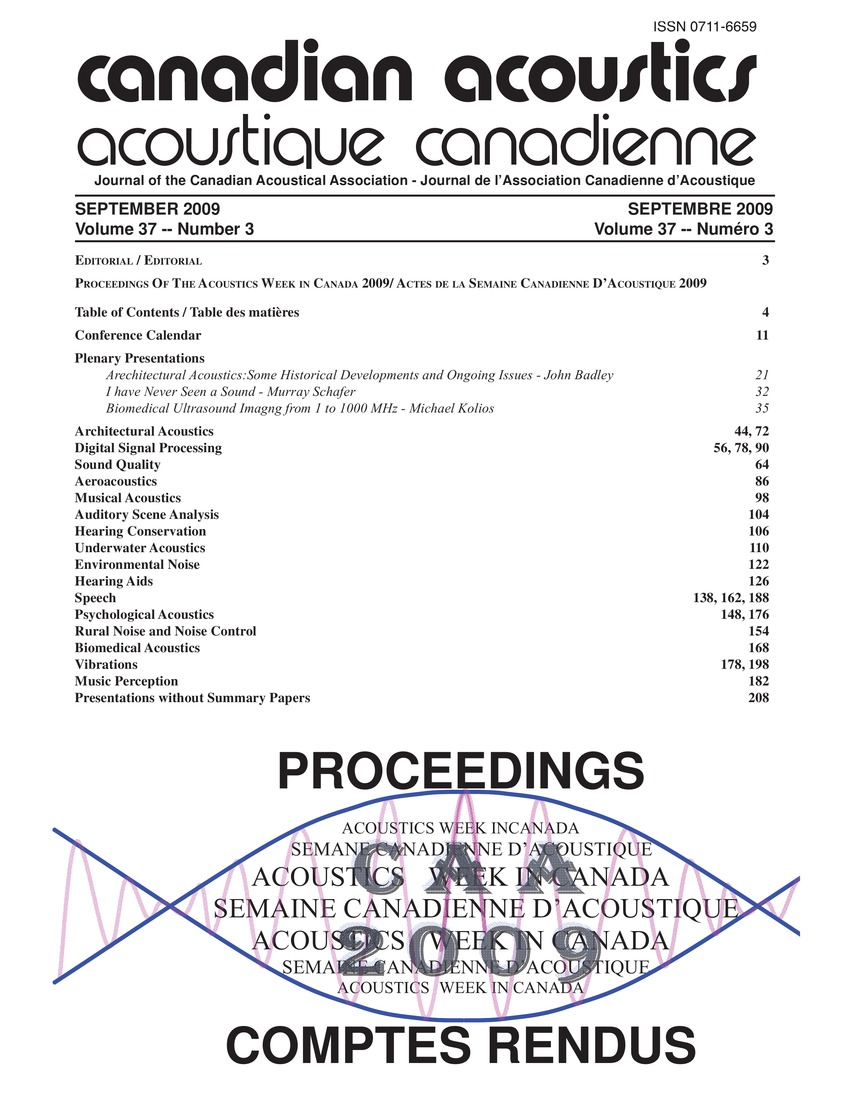A residual-cepstrum method of pitch estimation from noisy speech
Keywords:
Discrete Fourier transforms, Simulators, Adverse effect, Cepstral, Cepstrum, Cepstrum method, Hilbert envelope, Noisy environment, Noisy speech, Pitch estimation, Pitch period, Power cepstrum, Residual signals, Simulation result, Speech signals, Vocal-tractsAbstract
Residual and cepstral representations of speech were utilized to estimate pitch in a noisy environment. It was found that the major excitation of the vocal tract within a pitch period occurred at the instant of glottal closure (GC). It was possible to determine the pitch period by careful analysis of the speech signal with the help of GC instants. A discrete Fourier transform (DFT) based power cepstrum (DFTPC) was proposed to overcome the adverse effect of noise on the Hilbert envelope (HE) and residual signal (RS). The DFTPC of the HE exhibited a more prominent pitch-peak in a heavily degraded condition in comparison to that demonstrated by the conventional cepstrum of the noisy speech. Simulation results indicated that the global maximization of the DFTPC yielded an accurate pitch estimate as compared to the latest models for a wide range of speakers in noisy environments.Additional Files
Published
How to Cite
Issue
Section
License
Author Licensing Addendum
This Licensing Addendum ("Addendum") is entered into between the undersigned Author(s) and Canadian Acoustics journal published by the Canadian Acoustical Association (hereinafter referred to as the "Publisher"). The Author(s) and the Publisher agree as follows:
-
Retained Rights: The Author(s) retain(s) the following rights:
- The right to reproduce, distribute, and publicly display the Work on the Author's personal website or the website of the Author's institution.
- The right to use the Work in the Author's teaching activities and presentations.
- The right to include the Work in a compilation for the Author's personal use, not for sale.
-
Grant of License: The Author(s) grant(s) to the Publisher a worldwide exclusive license to publish, reproduce, distribute, and display the Work in Canadian Acoustics and any other formats and media deemed appropriate by the Publisher.
-
Attribution: The Publisher agrees to include proper attribution to the Author(s) in all publications and reproductions of the Work.
-
No Conflict: This Addendum is intended to be in harmony with, and not in conflict with, the terms and conditions of the original agreement entered into between the Author(s) and the Publisher.
-
Copyright Clause: Copyright on articles is held by the Author(s). The corresponding Author has the right to grant on behalf of all Authors and does grant on behalf of all Authors, a worldwide exclusive license to the Publisher and its licensees in perpetuity, in all forms, formats, and media (whether known now or created in the future), including but not limited to the rights to publish, reproduce, distribute, display, store, translate, create adaptations, reprints, include within collections, and create summaries, extracts, and/or abstracts of the Contribution.


